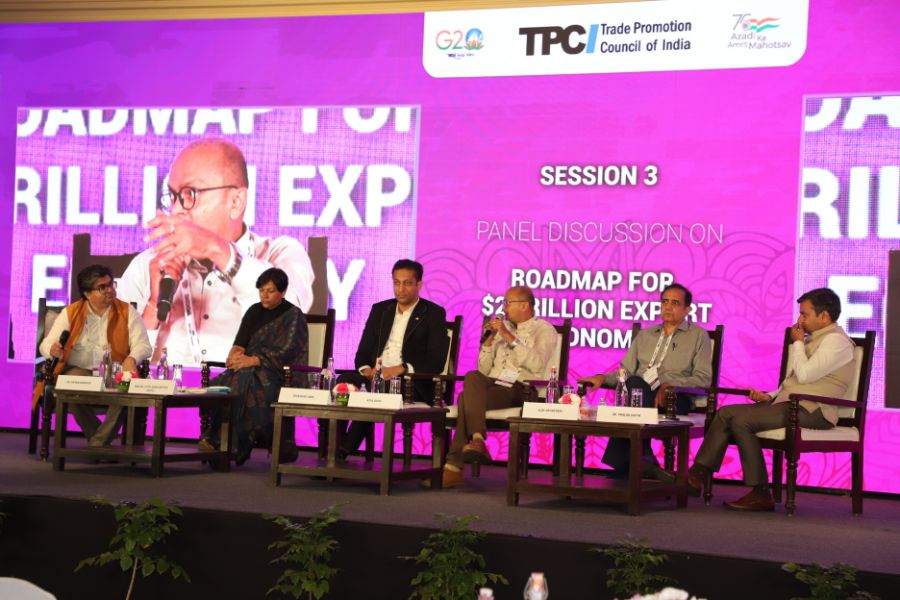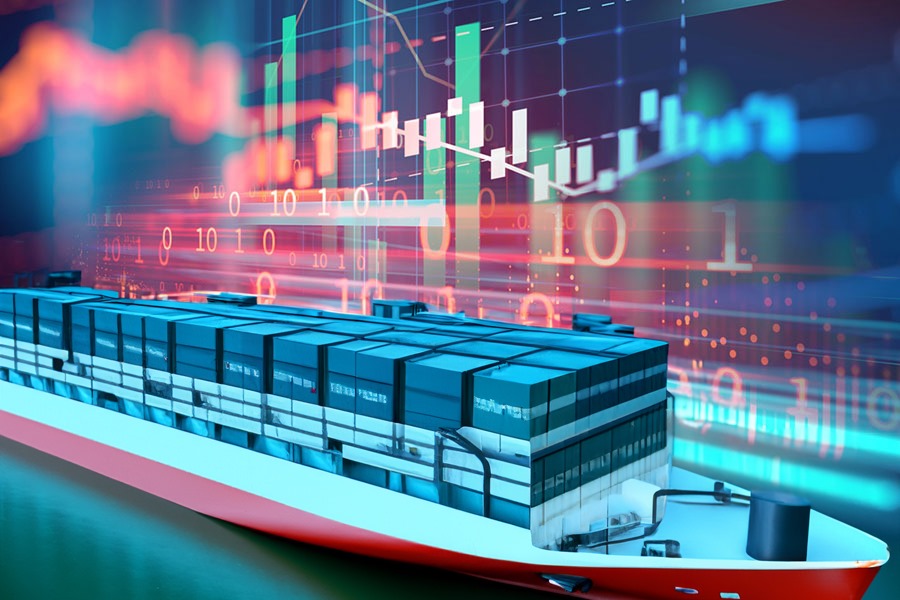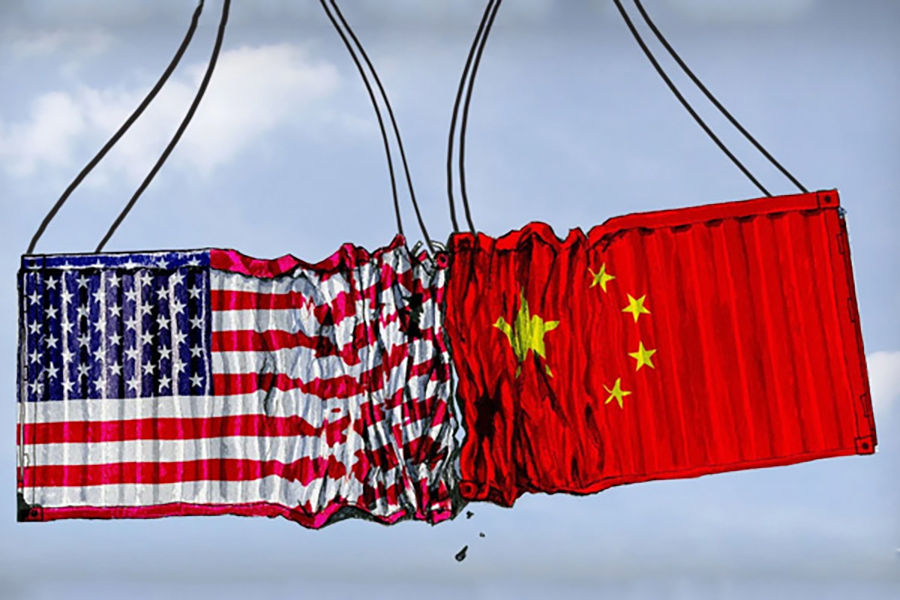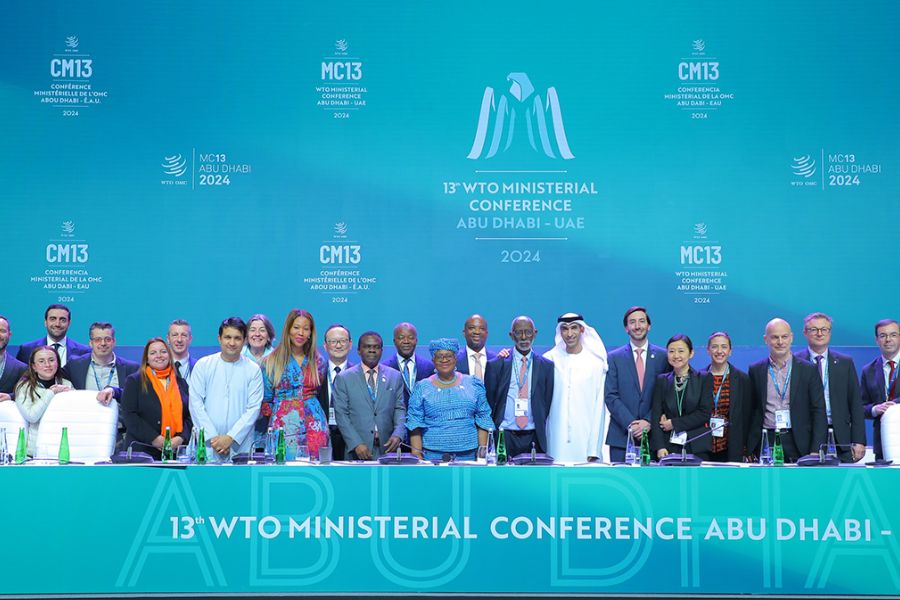The US$ 2 trillion export goal: Aspirational, daunting or just impossible?
What factors will drive or derail India’s march towards $2 trillion exports? The inaugural India Business and Trade Conclave organized by Trade Promotion Council of India featured an exclusive session by a multi-disciplinary panel on this moot point. The panelists concluded that integrated logistics, speed of infrastructure utilisation, innovation, overseas infrastructure, services diversification, FTAs, cluster approach, and technology (particularly AI) are as some of the top areas that demand focused attention from stakeholders.

Image Credit: Shutterstock
The knowledge session on ‘Roadmap to US$ 2 trillion export economy’ at the India Business & Trade Conclave featured a multi-disciplinary panel with backgrounds in academia, industry as well as the policy space. The discussion brought forward the views of the expert panel on how India could achieve the US$ 2 trillion export vision, as underlined by the Foreign Trade Policy 2023, through accelerated growth in merchandise and services exports.
The discussion was moderated by Dr Pritam Banerjee, Head, Centre for WTO Studies and Member, CATR, TPCI and the panelists were:
- Ajay Srivastava, Founder, Global Trade Research Initiative
- Dr. Pralok Gupta, Associate Professor, Centre for WTO Studies, and Member, CATR, TPCI
- Atul Govil, Chief Transformation Officer, Business Head (Bio-Polymers), India Glycols Ltd.
- Devashish Garg, Director, Shree Lal Mahal Group and
- Major Jyoti Joshi Mitter (Retd), Head of Rail, South Asia at A. P. Moller – Maersk.
Speaking on how future FTAs could help our industries to achieve the US$ 2 trillion export vision, Ajay Srivastava stated that as per current scenario, India’s 25% of exports are happening through FTA partners, but as we are going ahead with USA, EU, UK and other countries, this could jump to 70% in future. For the strategies that firms should adopt, he stated, “Whether you are an exporter or non-exporter, you will be affected by FTAs. So you should be doing some smart exercises. Just write down your product’s name and export-import profile. Then analyse what you will be losing in terms of competitiveness if the FTA is negotiated.” He added that companies should be doing this exercise for all products and all countries with which India is doing FTAs.
Services exports – will technology be friend or foe?
Services is an area that does not get too much attention in discussions around the US$ 2 trillion export target. But as a man of two hats, Atul Govil (who handles the biopolymer business as well as drives IT and transformation at India Glycols), made some very pertinent points on the elephant in the room (in case you are on the wrong side of the divide) – technology. And if you are on the right side, technology could actually prove pivotal to the achievement of this target!
He pointed out that India has a median age of 28 years, making it 10 years younger than China on an average. Besides this, India has far more digital natives, who can easily adopt digital means to conduct business. But we need to be aware of changes happening across the world due to the proliferation of artificial intelligence. Atul cited research that stated that around 40% of 900 varieties of jobs would be replaced by AI by 2035. The likes of Chat-GPT are challenging our developers, which are around 75% of our software workforce. At least 7-8% of development skills are being channelled through these AI conversational systems.
Technology will give us productivity gains, efficiency gains and also cost effectiveness, but if we do not adopt it now, it will not happen in 7 years 10 years by itself. But by that time, as his comments seemed to imply, India would have kind of missed the bus. Technology adoption by MSMEs was highlighted by him as an area of concern because it is traditionally owner-driven.
Dr Pralok Gupta talked about how services exports could be catalysed, “Around India’s 50% of services exports are from IT and related services, and out of these 50% services, 80% is going to markets of the US, Canada and UK. So, if there are any regulations with respect to IT services in these countries, it is going to affect our services. To reduce this dependence, India needs to diversify and work on other services and markets.” He highlighted tourism as an important area of scope for instance – be it religious, sports, nature, wellness etc. Dr Gupta felt that while Mode 1 services had gained significant importance post Covid-19, Modes 2 and 3 will be important to achieve the $2 trillion export target.
View from the farm
While responding to questions around rising rice demand around the world and how India could target global markets, Devashish Garg shared a few facts along with several challenges faced by Indian agricultural industries and their solutions which would support India’s journey towards the 2030 target.
India exported about $42 billion worth of agriculture and elite products alone in FY2020-21. To achieve the target of $1 trillion of merchandise export in 2030, Devashish Garg projected that the country will have to grow it from US$ 42 billion to US$ 126 billion, recording a 13% CAGR. He felt that while it was a tough target, it could be achieved with the requisite support.
Talking about the PLI Scheme, Garg pointed out that while it was a good scheme with provisions for MSMEs, a lot of them were unable to benefit because of the complexities in its structure. Giving the example of rice, he suggested that since 90% of the rice market is fragmented in thousands of players, primarily from MSME category. To benefit from this scheme, the industry should consider adopting a cluster based approach whereby small companies can apply as a cluster and reap benefits of the PLI scheme. This will not only decentralize the rewards but also ensure a broader industry representation at a global stage.
The second aspect he talked about was agricultural infrastructure. Garg expressed optimism at the manner in which investments had been made in cold chains, road network and overall logistics infrastructure. However, he pointed out one major untapped area.
He suggested that to boost exports to some markets with sub-par indrastructure, the Indian government could allocate some incentives that can help develop their port infrastructure, since this is one of the key challenges faced by exporters in India. In markets like Madagascar where India is able to export large quantities of rice for instance, there aren’t enough storage facilities and equipment at the ports. The government could incentivise companies to establish such port infrastructure abroad.
World class infrastructure at breakneck speed
India has a target of reducing logistics costs, but how? The government and the logistics sector is working together to bring down the overall cost of end to end container movement especially to some of the non-traditional markets. Major Jyoti Joshi Mitter (Retd) commented, “Logistics is the driving factor to fuel international trade, but in order to improve in this aspect, India needs a good infrastructure whether it is road, rail, sea ports since it is the factor that decides the cost, quality and delivery of exports and imports.”
As an industry or as a service provider, the speed of delivery of the infrastructure is crucial since the ease of doing business, cost of doing business will be affected due to these projects. While the government is taking multiple initiatives like Gatishakti, bringing together multiple ministries under one institutional framework or earmarking 1.7% of GDP for logistics; the question for the industry is how fast it can commence delivery on the infrastructure being developed.
Integrated logistics was the way forward rather than standalone small savings here and there. Major Mitter emphasised that we must work towards integration of the total supply chain whether it is at the India end or the overseas end. She also admitted that it is a very heartening sign that India has improved its rank from 44 to 38 in the Logistics Performance Index.













Leave a comment